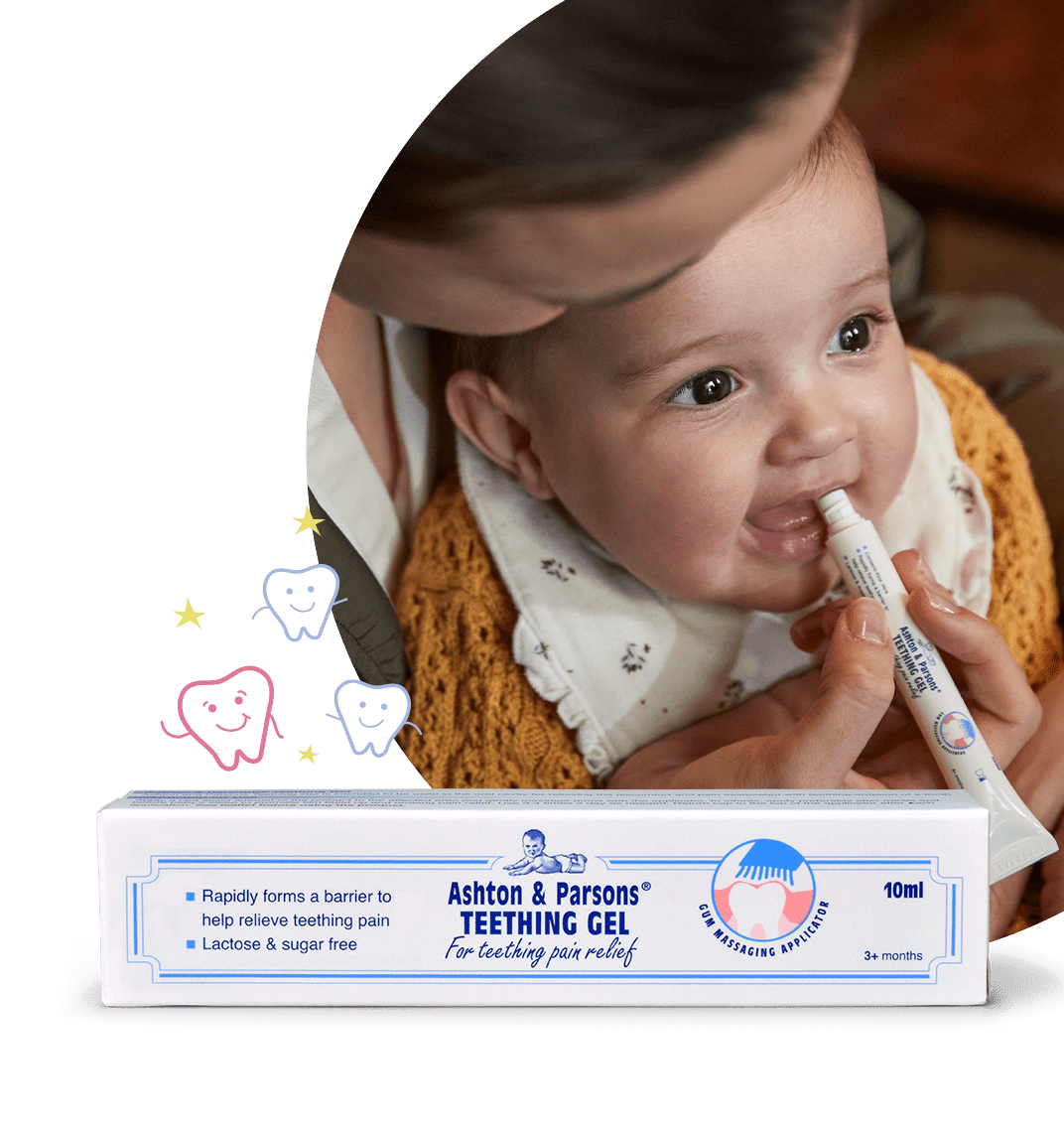It is likely that you’ll notice symptoms of your baby beginning to teethe at around 6 months old. However, some babies can be born with teeth, or begin developing them very early. Others don’t begin teething until they are a year old. For each tooth eruption, symptoms may appear from 3 -5 days beforehand. But every baby is different, and the time it takes for all their teeth to come through may vary dramatically. We’ve put together a guide that may help you to manage expectations when it comes to teething timescales.
5 – 7 months: Baby’s first teeth typically arrive. The front teeth in the lower jaw (the lower central incisors) are usually the first to come through.
6 – 8 months: Top front teeth appear (the upper central incisors).
9 – 11 months: Teeth either side of the top front two teeth appear (upper lateral incisors).
10 – 12 months: Teeth either side of the bottom two front teeth emerge (lower lateral incisors).
12 – 16 months: Back teeth (molars) grow.
16 – 20 months: The next teeth back (canines) emerge in both the top and bottom jaw.
20 – 30 months: More back teeth (second molars) appear.
A baby’s complete set of 20 milk teeth is likely to have appeared by the time they are 2 1/2 years old. These milk teeth will begin to fall out, as they are replaced by permanent teeth, when your child is roughly six. For a visual guide on which order your little one’s teeth will arrive, click here.
Each tooth will take several days to emerge fully from the gum. As soon as your baby has teeth visible, it is important to brush them morning and night in order to prevent gum disease (gingivitis) from occurring due to plaque build-up.
You can help to ease the symptoms of teething by providing them with something safe to chew on. Teething rings (including some you can cool in the fridge) are widely recommended, and some parents choose to give weaned babies chilled raw fruit and vegetables (only with adult supervision to avoid choking). Don’t have a teething ring to hand? Don’t worry, there’s plenty of alternative options from items you may have at home. Other natural therapies include Traditional Herbal Remedies like Ashton & Parsons Teething Powders, which have been used by mums and dads to help soothe symptoms of teething pain for over 150 years. Gels are also available, including Ashton & Parsons Teething Gel, a medical device with its soft brush applicator to help massage the gel onto your little one’s gums. Several studies suggest the benefits of cuddling to comfort babies during this difficult time – but you are probably acutely aware of the benefits cuddling brings to both baby and parent already!
The information in this article is not for the intention to diagnose or prescribe. Please contact your healthcare professional if you have any medical concerns.
Ashton & Parsons Teething Powders are a traditional herbal medicinal product used for the symptomatic relief of teething pain and the symptoms associated with teething which are sore and tender gums, flushed cheeks and dribbling, exclusively based upon long-standing use as a traditional herbal remedy. Contains tincture of matricaria. Always read the label.
References:
https://cks.nice.org.uk/teething#!diagnosisSub
https://www.nct.org.uk/baby-toddler/teething/your-guide-teething-month-month
https://www.nhs.uk/conditions/pregnancy-and-baby/teething-and-tooth-care/
https://www.pampers.com/en-us/baby/teething/article/teething-symptoms-for-babies






